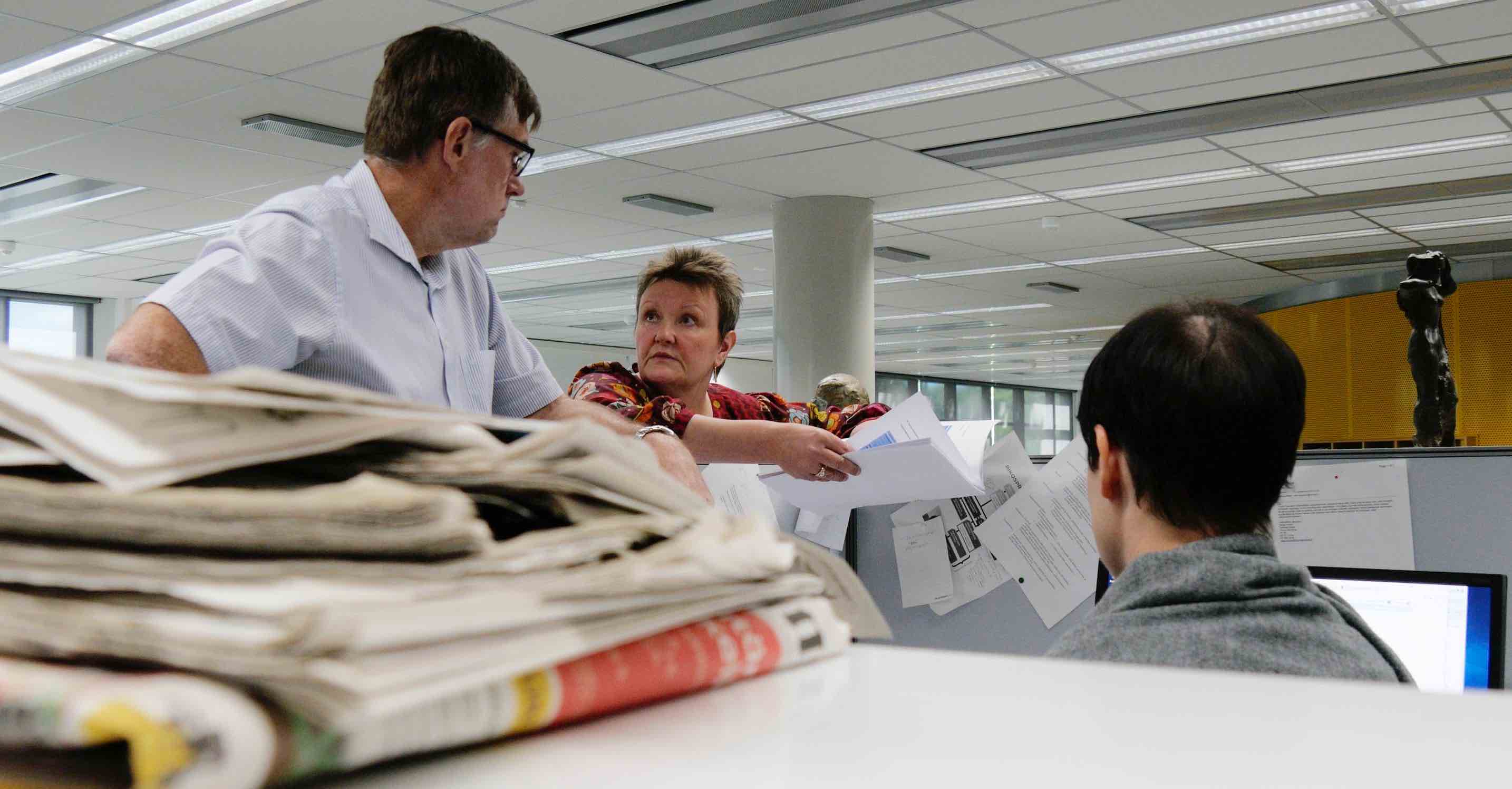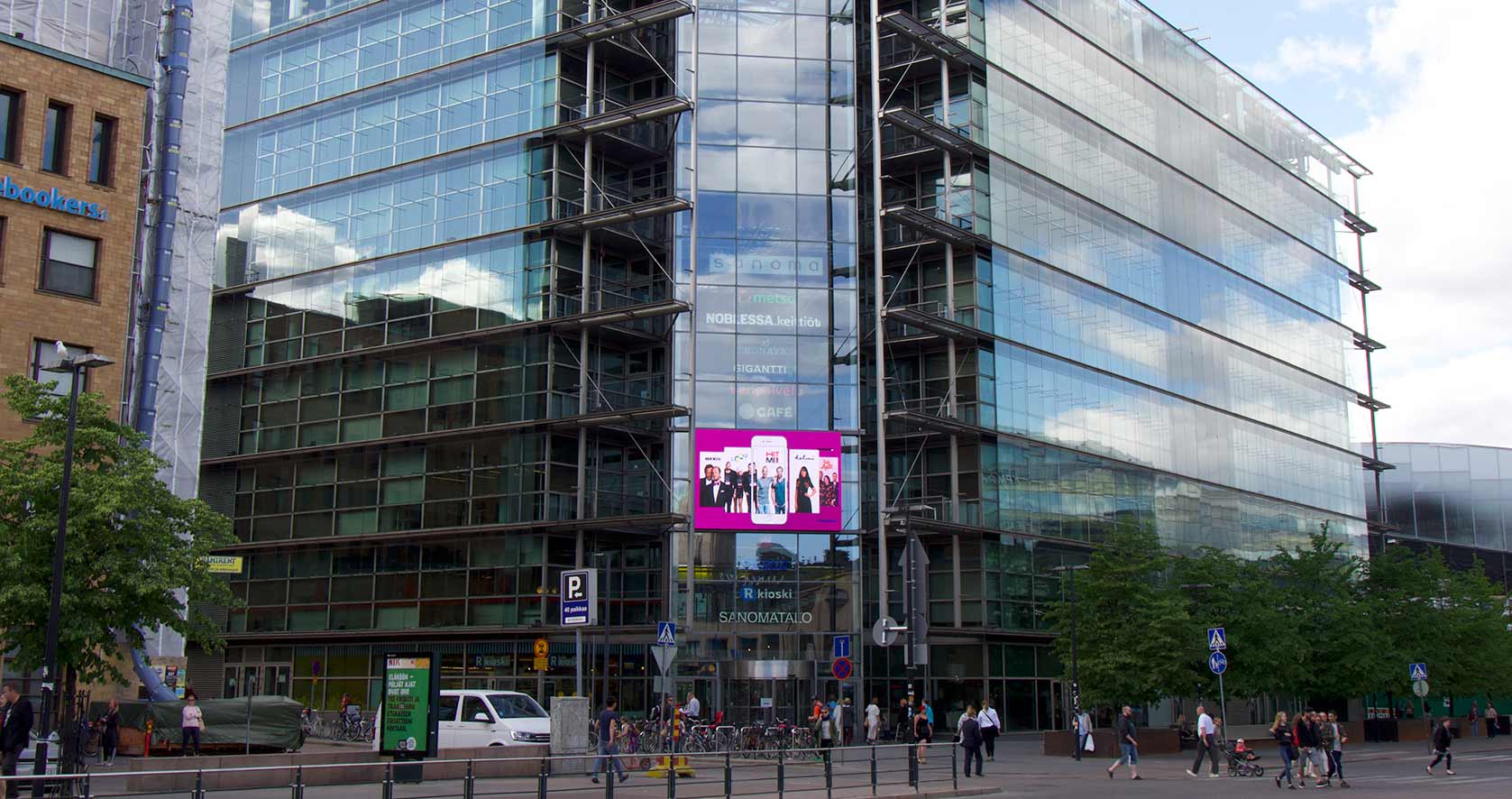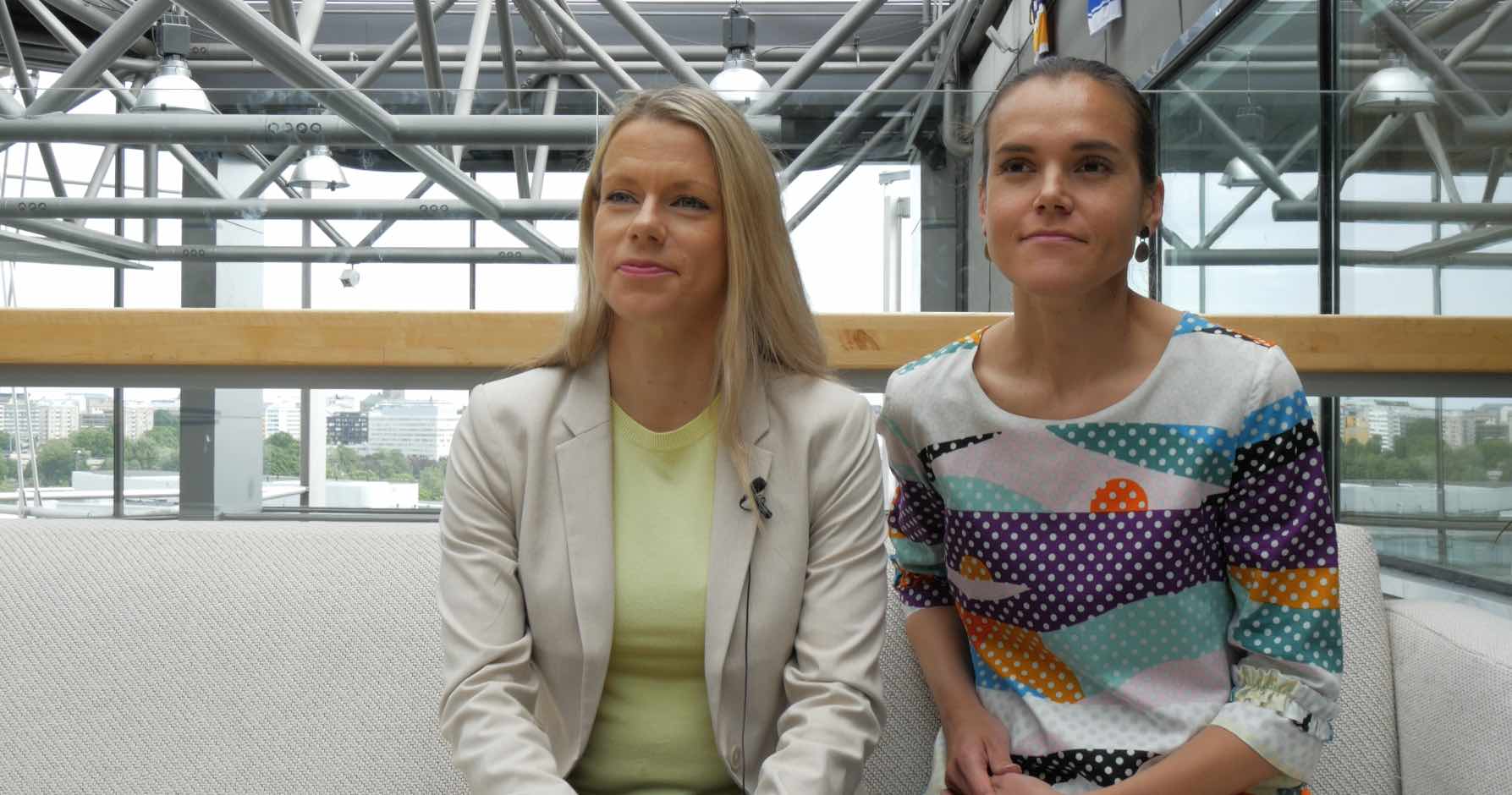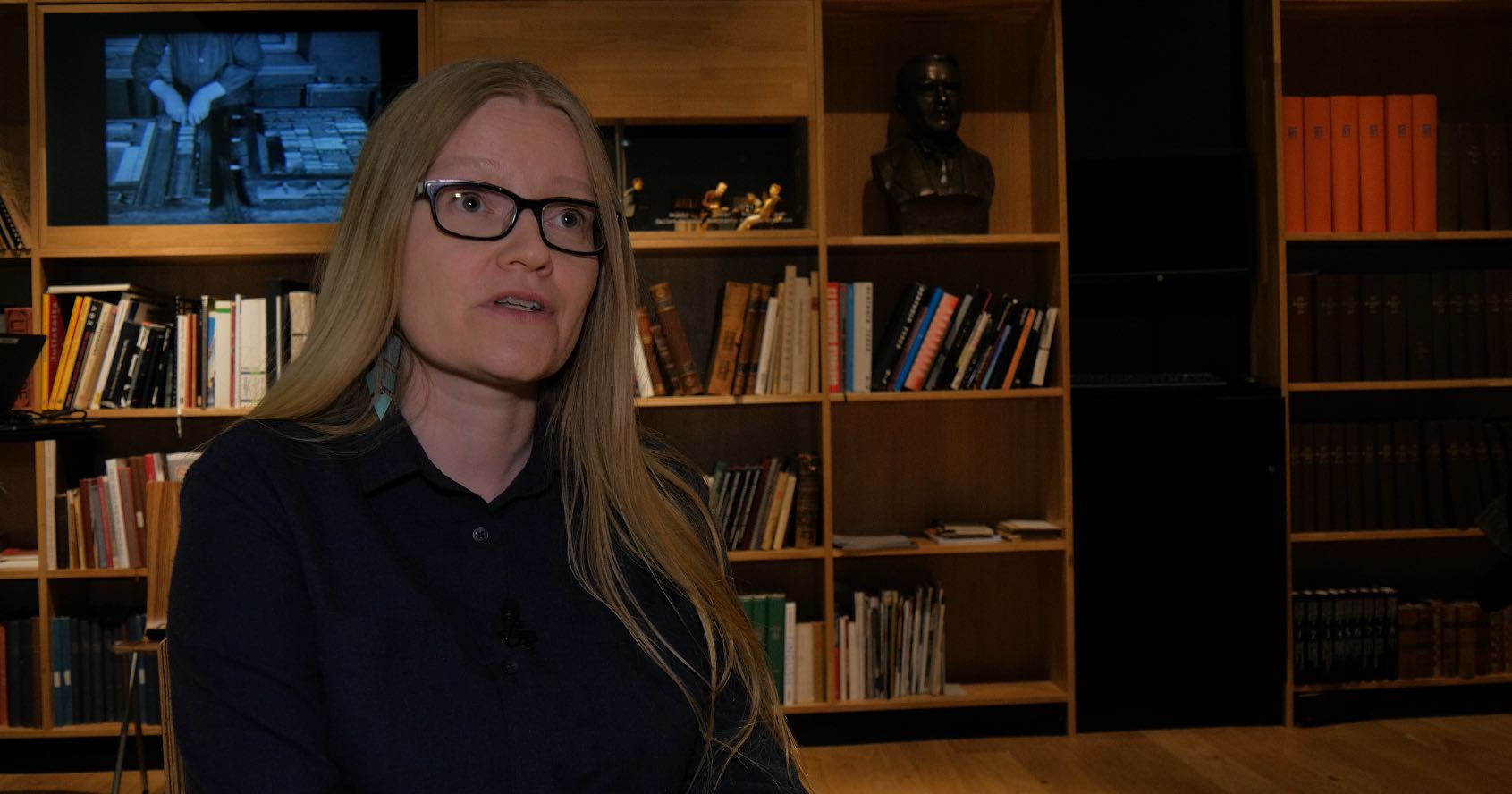Introduction
In June 2018, the International Press Institute (IPI), a global network of editors, media executives and leading journalists for press freedom, visited Finland as part of IPI’s Ontheline project, which aims to identify best newsroom practices for preventing and better responding to online harassment of journalists.
Over the course of five days, the IPI delegation with editors-in-chief, managing editors, web and social media editors, and staff and freelance journalists to better understand online harassment and how it is dealt with in Finland. IPI visited the newsrooms of the leading national daily newspaper Helsingin Sanomat; the evening newspaper Iltalehti; the national public broadcaster Yle; regional newspapers Maaseudun Tulevaisuus and Turun Sanomat; local city newspaper Turkulainen; and the regional Swedish-language minority newspaper Åbo Underrättelser. In addition, IPI organized two focus groups: one for female journalists and one for freelancers with the Union of Journalists in Finland (UFJ). IPI also met with Finnish lawyers, media researchers and other media professionals in relation to the Ontheline project.
Meetings concentrated on different types of mechanisms for dealing with online harassment, including prevention, community management, social media management, psychosocial support and legal measures. However, the discussions also offered an opportunity to learn more about the general phenomenon of online harassment and its manifestation in the Finnish media landscape.
Report by Alma Onali, Helsingin Sanomat Foundation Journalism Fellow at IPI
Online Harassment in Finland
In Finland, articles related to immigration, asylum and Russian interference prompt the greatest number of online attacks on journalists. The Union of Journalists in Finland (UFJ) and the union’s newspaper, Journalisti, conducted a survey in 2016 for its members to find out many of them had been threatened because of their work. Out of the 1,400 who answered the survey, one-sixth reported having received some form of threat. Some 40 percent said the threats were related to articles dealing with immigration and asylum.
The online harassment of journalists covering immigration and asylum rose alongside increased numbers of asylum seekers in Finland between 2015 and 2016. Many of the online hate campaigns against reporters were aided by a propaganda website called MV-lehti and in some cases have been supported by far-right politicians. Almost all of the journalists IPI met during the visit reported that MV-lehti had played some part in their harassment cases.
“If I were 20 years younger, I would have had sleepless nights, but now I was just amazed at how they organized such a smear campaign against me”, one journalist, who said he was the target of a disinformation news piece and harassing phone calls and e-mails, told IPI.
MV-lehti’s founder is now facing charges in a Finnish court of defamation and incitement to ethnic or racial, among other offences. Prosecutors allege that the founder worked with a supporter of Russian President Vladimir Putin and a third person to machinate a disinformation campaign against journalist Jessikka Aro in order to prevent her from doing her job. Many journalists IPI interviewed said that such court cases are important in setting lines in terms is considered freedom of speech and what is not, given that online harassers frequently appeal to such protections.
There are many other topics that raise heated discussion in Finland, such as policy regarding wolves, the Israeli-Palestinian conflicts, climate change, and minority rights. Many journalists said that once a reporter’s name is known in certain circles, he or she becomes a target of harassment no matter what the topic.
Many interviewees expressed concern over what they viewed as the normalization of hate speech in Finnish society. Journalists said that while they understood that receiving negative feedback was part of the job, the understanding of how much and how vicious such feedback should be accepted had become stretched.
In particular, attacks that focus on journalists’ personal traits and private life have increased, a development highlighted by PhD researcher Ilmari Hiltunen of the University of Tampere, who studies how Finnish journalists experience external interference. Hiltunen’s work goes beyond online harassment – it examines all ways in which external forces try to violate journalistic autonomy – but his findings conclude that such abuse poses a threat to press freedom.
“Many of my interviewees and those who answered my survey were worried that the difference between the professional role and private person was blurred in the eyes of the public”, Hiltunen told IPI. “Attacks are more often focused on the personal traits of the reporter rather than (his or her) actions as a professional or the results of (his or her) work.”
Hiltunen said that changes in journalistic culture – including efforts to “brand” oneself, increased social media presence, and reaching out to readers through strong, subjective opinion writing – had made journalists more visible and easier for the audience to reach through different channels. Journalists, he noted, have assumed more of a public-figure role than before. Young journalists in particular are advised to merge their professional and personal roles, but the “personification” of journalism is not without its pitfalls.
“One important question is whether personification is actually a positive or a negative thing for journalistic credibility “, Hiltunen remarked. “I think this is an aspect that has to be contemplated in relation to online harassment and threats.”
Although employers in Finland are aware of online harassment as a problem, support from managers varies. In the 2016 UFJ survey, 18 percent of male and 12.8 percent of female journalists reported that their supervisor had not reacted to the threats. It must be noted that while a majority of respondents said that employers had a responsibility to protect their employees’ safety, one-fifth of female and one-third of male journalists said that hey not reported threats to their supervisor at all.
Editors and other managers interviewed by IPI emphasized that the tendency to communicate harassment to managers differed from person to person. Readiness to discuss the issue also depended on newsroom size: in large companies, journalists often discuss cases with their nearest colleagues and supervisors, while only the most serious attacks reach top editors. In smaller newsrooms, where most employees work in the same shared space, information flow between journalists and their managers is better. The local newspaper Turkulainen, based in Turku, for example, has just two journalists, one editor-in-chief and one summer reporter.
“We are a small community and we know each other well”, Turkulainen’s editor-in-chief, Janne Koivisto, told IPI. “So when our summer worker faced heavy harassment and negative comments, I invited him to join me while I was delivering our summer edition to the neighbouring municipalities and we could talk about the issue while driving through the region.”
When it comes to the authorities, Finnish journalists said while police and prosecutors are aware of the issue, they are not taking it as seriously as they should. Many journalists consider reporting threats to the police as futile even though they agreed it should be done more often to at least send a message. The level of satisfaction in dealings with the police varies. One journalist described the positive experience of having a contact at the local police office who understood well the phenomenon of online threats and was willing to take measures to protect the journalist’s work in public places. Another, however, recounted disagreements with the police, which in this journalist’s view did not understand the difference between freedom of expression and hate speech. In some cases, threats against journalists are believed to even come from inside the police force.
Even if the police investigate the threats (which are they are said to rarely do) the process usually stops with the prosecutor, UFJ lawyer Hannu Hallamaa told IPI. The legislative framework for tackling online exists, Hallamaa said, but the necessary implementation lags behind. Policymakers have a responsibility for communicating the importance of the issue.
“This is a problem in the society, not a legal issue”, Hallamaa commented.
Still, there are a few recent, positive examples from Finnish courts showing how the legal system can be used to tackle online harassment. Linda Pelkonen was the subject of intense harassment in 2015 when, while working for the online news site Uusi Sumoi, she wrote a story on the rape of a 14-year-old girl in which a Finnish citizen of immigrant background was allegedly involved. Earlier this year, two of the three men charged with harassing her were ordered to pay fines for defamation, marking the first time a Finnish court convicted a person in connection with the online harassment of a journalist. Pelkonen’s case sets a precedent for other cases such as that of the Jessika Aro.
Some journalists said that online violence, threats and aggressive comments had changed the way they think about their work. No journalist reported having succumbed to self-censorship, but several indicated that they thought more carefully about the wordings of stories and headlines, were more precise with facts and re-considered the angle of articles. Many said they tried to write in a way that does not leave space for interpretation or mistakes that could ignite a flood of comments, a process that slowed down the work.
“Sometimes I have to take a break from (writing about) heated topics and write about something completely different”, one journalist told IPI.
Journalists said they thought twice about whether to write about immigration.
“I don’t want to (write about) the ethnicity of criminals to avoid the heavy moderation work afterward”, another journalist confessed, referring to the work of managing online comment sections.
Editors at Finland’s biggest daily newspaper, Helsingin Sanomat, noted that the chilling effect resulting from online harassment affects not only journalists but also interviewees. Scholars and others have refused to have their names of faces mentioned in news stories out of fear of receiving hateful comments and threats. The editors perceived this development as a serious threat to a free and open society that embraces freedom of expression.
Online Harassment Of Female Journalists
Finnish media professionals recognize well the gendered aspect of online violence against journalists. While male and female journalists receive similar numbers of threats, the nature of the threats differs according to gender. According to the 2016 UFJ survey, 14 percent of the female journalists surveyed reported threats of sexual violence. No male journalist reported receiving such threats. Around five percent of both genders reported receiving death threats.
As part of OSCE RFoM’s project on Safety Of Female Journalists Online (SOFJO), IPI organized a focus group with prominent Finnish female journalists with experience of online harassment. Those present expressed the view that talking and sharing experiences with colleagues was the best way to cope with online abuse and harassment. Many had found support from secret Facebook groups for harassed journalists. Participating journalists also agreed on the importance of having colleagues read comments and emails on a harassed journalist’s behalf and collect screenshots so that the targeted journalist would not have to experience the hate alone. Other coping mechanisms highlighted included humour, treating online harassment as a larger phenomenon rather than personal abuse, distancing oneself to the issue, avoiding certain topics, blocking or deleting social media channels, changing online behaviour, naming and shaming, and contacting or facing the harassers.
When it comes to employers’ reactions, the experiences of the female journalists varied. In some cases, managers had either not reacted to reported instances of online harassment or had reacted with indifference.
“First they promised to help, but when the threats were sent to the editor-in-chief, the only answer was a short ‘ok’”, one of the journalists recounted.
Another journalist recounted how slanderous e-mails about her had been sent not only to her but also to her editor-in-chief and managing editors. The editors never contacted the journalist about the messages and did not respond to the email.
“What if they believed what was written about me?”, she asked.
Participating journalists insisted that even a simple sentenced communicating support and understanding together with an offer to provide necessary measures would have been enough to ease the emotional toll. They also recommended a greater focus on harassment of female journalists as a structural issue reflecting the status of women in society rather than as single, separate incidents.
IPI also interviewed journalist and writer Johanna Vehkoo, who, together with illustrator Emmi Nieminen, published a journalistic comic book on online misogyny called The Internet of Hate and Loathing (Kosmos 2017). The book collects the stories of several women in different professions who have encountered online violence, goes through academic research on online hate, takes a look at the trolls and their motives, and finally, gives tips and suggestions on how targets can protect themselves.
Vehkoo, who herself has been a target of online harassment, has advocated for adding gender-based hate as an aggravating circumstance in hate crimes.
“The criminal system doesn’t cope with internet”, she said. “Our policy makers and the police have let the situation slip too far.”
Ilmari Hiltunen, of the University of Tampere, said his research had not encountered significant differences in terms of the amount of external interference that male and female journalists experience and noted that similar work in countries like Sweden and Norway had led to similar findings. However, that amount does not reveal anything about the intensity of nature of the harassment. Hiltunen also said that he had found significant differences in the attitudes of men and women regarding external interference.
“Female journalists clearly have a more negative picture of the phenomenon, and it causes them more emotional stress”, Hiltunen told IPI. “Female employees had a more negative impression of their employers’ and supervisors’ abilities to support them and more pessimistic views of the ability of their media outlet to curb external interference.”
Freelance Journalists
IPI also conducted a focus group meeting with freelancers and representatives of the UFJ. In the 2016 survey referenced elsewhere in this report, 17 percent of journalists who reported having been threatened were freelancers.
Lacking the support of a media company, freelancers can feel especially alone when facing harassment. The focus group participants, many of whom were highly experienced, said they were not afraid to interact with harassers and insisted that they did not practice self-censorship, something they nevertheless admitted required great determination.
“I’ve chosen my side and I am very open about it”, one of the freelancers said. “You have to decide for yourself whether you do this or don’t. Reporting to police doesn’t go anywhere.”
The participating freelancers said that the best way to deal with harassers was to ignore or block them. Threats and aggressive comments should also be reported to the social media platform in question. The general view was that while engaging in dialogue with harassers might sometimes lead to a satisfying result, in most cases a “civilized discussion” was out of reach.
There was also the question of how to raise the issue publicly and with the media outlets that contract the freelancers for work. The more experienced freelancers at the focus group said while they realized that fighting online harassment could close some doors in the job market, they were confident of their ability to continue working. The pressure not to tell clients about online harassment is greater for less experienced freelancers, who do not want to be perceived as “difficult” out of fear of losing job opportunities. Avoiding controversial topics was seen as one way of skirting the issue altogether.
The freelancers also emphasized the importance of joining forces with colleagues, be they freelancers or staff journalists. “We have colleagues; we’re not alone”, as one of them put it.
Analysing its own response to the issue, the UFJ concluded that it should hold more informal peer support events for freelancers and other harassed journalists. It also acknowledged the need to direct freelancers to relevant professional support as needed and better communicate the needs of freelancers to media houses, which should also offer support.
Newsroom Measures against Online Attacks and Harassment
In this section of the report we go through the measures and protocols that were already implemented at the newsrooms IPI visited.
Registration and moderation
The strength of comment authentication varied among newsrooms. Some require a name and contact details, which can be fabricated. Some require a Facebook account to register, which excludes non-Facebook users from discussion, but increases the likelihood that users will comment under their own names. In general, strong authentication measures were seen as a good way of preventing at least some of the harassment. The regional newspaper Turun Sanomat currently does not require any form of registration for commenting on its website but plans to change that, Sari Sarelius, the newspaper’s head of web editorial told IPI.
“I want a registration system, because it can prevent at least a bit of the worst comments”, Sarelius said. “But it is still in process since the change requires a lot of work.”
Sarelius and many other newsroom moderators commented that, in contrast to newspapers’ own websites, moderating Facebook – where much of reader discussion now occurs – is difficult and laborious: it is essentially manual work and there are no preventive algorithms for blocking abusive language. Also, comments on Facebook are published immediately, whereas on website comment sections comments can be hidden until a moderator approves them.
Smaller newsrooms such as Turkulainen lack a moderation team and the task instead falls to everyone. The paper’s editor-in-chief takes care of the moderation on weekends. Obtaining registration systems and some form of algorithm-based pre-moderation system could ease the burden of small newsrooms, which, however, usually lack the necessary financial resources.
Helsingin Sanomat (HS) has outsourced its moderation to Stockholm. The newspapers’ s archive chief, Jarkko Rahkonen, told IPI that outsourcing has somewhat decreased the quality of moderation but has lowered costs significantly. HS has also tried different ways of curating comments. Today, readers have the possibility to “endorse” comments they think have been “well argued”. The paper is currently looking for new ways to enhance its comment section, for example, by building it into a more “tree-like” shape so that discussions paths would be easier to follow.
Together with the Finnish fund Sitra, HS has facilitated initiatives on its website to test where “productive dialogue” online is possible. Focusing on topics such as “special education” or “immigrant integration”, these chats aim to find solutions instead of negative arguing. The chat is open for a certain amount of time, guided by rules for a productive dialogue and by moderators who steer the discussion when it appears to be heading out of bounds.
One of the biggest issues moderators face is evaluating whether a comment is offensive or note. Moderators said they would sometimes spend hours contemplating if a comment should be removed or not, since they do not want to unnecessarily restrict freedom of expression. Moreover, sometimes blocking comments on the website can just lead to a flood of unpleasant messages on another platform.
“We pride ourselves on freedom of speech, but the line (separating it from hate speech) is blurred”, Leo Lemmetty, the web moderator of the online news site and blog platform Uusi Suomi, told IPI. “We don’t want to restrict discussion too much, because we believe that open discussion could diminish harassment.”
The meetings with Finnish moderators confirmed previous findings that moderators, too, can grow tired of the hateful comments and messages with which they are confronted on a daily basis. For this reason, psychosocial support should be extended to journalists as well as moderators.
Community management
Most Finnish newsrooms do not have community management. One exception is the public broadcaster Yle. Last year, Yle appointed social media journalist Sami Koivisto as head of audience dialogue to manage and create a new kind of online discussion culture. Koivisto explained to IPI that Yle now has staff specialized in online communication and who engage in dialogue with the audience on social media channels. This approach, he said, was developed as a response to online hate that began several years ago. Talking with the audience about the issue that drive online anger and about the ways in which journalism functions has led to a healthier environment for discussion, Koivisto suggested.
“We have gained a lot of information about our audience through dialogue”, he told IPI. “We understand our audience better and we know what they think about journalism – listening to the audience is very important. We also tell them how we do journalism so there is less misunderstanding of how journalism works.”
Support measures
The most common and effective form of psychosocial support highlighted in IPI’s meetings with Finnish journalists was talking to colleagues and receiving peer support.
When it comes to public support for journalists who are the targets of harassment, some journalists said that a public statement from their media company would be helpful, while others said it would only make the harassment worse. If editors or publishers do decide to show public support, they should do so in a way that does not cause more harm.
“Talking about harassment publicly might make it a bigger topic, and put the journalist more in focus”, one journalist said.
Still, all journalists interviewed agreed that employers should strongly communicate that they stand firmly by the journalist, whether in public or private.
“As long as my colleagues respect my work, I am fine”, another journalist told IPI.
Following several online attacks on Turun Sanomat journalists, the newspaper has taken concrete measures to ensure the safety of its journalists, including providing security cameras to the home of a journalist who faced death threats and threats to burn down her home.
Turun Sanomat Managing Editor Veijo Hyvönen told IPI that the paper’s first reaction after another of its reporters was targeted in a vicious and organized online hate campaign last year was to temporarily close the chat and comments section of its website. Security measures for the journalist and for the newsroom were tightened after a taxi driver implied he had “unfinished business” with the journalist. The harassment continued on the streets and in other public places and eventually the journalist moved away from Turku, although Turun Sanomat ensured that she could continue working for the paper’s parent company. Turun Sanomat has since collected together guidelines for journalists to be prepared for online hate.
RELATED REPORTS

Countering Online Harassment of Journalists: Poland

Online Attacks on Journalists: UK
The production of this report was made possible with the financial support of:








